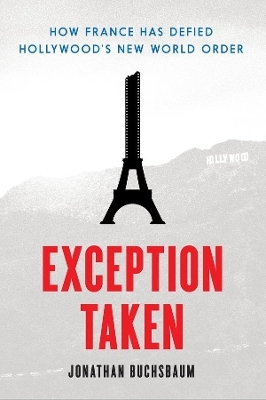
Exception Taken
Columbia University Press (Verlag)
978-0-231-17066-6 (ISBN)
In Exception Taken, Jonathan Buchsbaum examines the movements that have emerged in opposition to the homogenizing force of Hollywood in global filmmaking. While European cinema was entering a steady decline in the 1980s, France sought to strengthen support for its film industry under the new Mitterrand government. Over the following decades, the country lobbied partners in the European Economic Community to design strategies to protect the audiovisual industries and to resist cultural free-trade pressures in international trade agreements. These struggles to preserve the autonomy of national artistic prerogatives emboldened many countries to question the benefits of accelerated globalization. Led by the energetic minister of culture Jack Lang, France initiated a series of measures to support all sectors of the film industry. Lang introduced laws mandating that state and private television invest in the film industry, effectively replacing the revenue lost from a shrinking theatrical audience for French films.
With the formation of the European Union in 1992, Europe passed a new treaty (Maastricht) that extended its legal purview to culture for the first time, setting up the dramatic confrontation over the General Agreement on Trade and Tariffs (GATT) in 1993. Pushed by France, the EU fought the United States over the idea that countries should preserve their right to regulate cultural activity as they saw fit. France and Canada then initiated a campaign to protect cultural diversity within UNESCO that led to the passage of the Convention on Cultural Diversity in 2005. As France pursued these efforts to protect cultural diversity beyond its borders, it also articulated "a certain idea of cinema" that did not simply defend a narrow vision of national cinema. France promoted both commercial cinema and art cinema, disproving announcements of the death of cinema.
Jonathan Buchsbaum is professor of media studies at Queens College, City University of New York. He is the author of Cinema and the Sandinistas: Filmmaking in Revolutionary Nicaragua (2003) and Cinema Engage: Film in the Popular Front (1988).
List of Figures Preface List of Abbreviations Introduction 1. International Domination by the U.S. Film Industry 2. The Lang Years 3. European Film Policy and Television Without Frontiers 4. GATT 5. From Canal+ to Canal- 6. Bilan(s) 7. From Cultural Exception to Cultural Diversity 8. Was the Experience Beneficial? Conclusion Appendix A. A Note on Sources Appendix B. Calculation of Automatic Aid in France Appendix C. The Compte de soutien: A Schematic Appendix D. Financing French Film: A Schematic Appendix E. Grants to Art et essai Theaters Appendix F. Films Chosen for High School Students in Lyceens et apprentis au cinema Appendix G. List of Films Aided by Fonds Sud Appendix H. First Films in French Film Production Notes Bibliography Index
| Erscheinungsdatum | 12.01.2017 |
|---|---|
| Reihe/Serie | Film and Culture Series |
| Zusatzinfo | 10 b&w illustrations and 70 tables and graphs |
| Verlagsort | New York |
| Sprache | englisch |
| Maße | 152 x 229 mm |
| Themenwelt | Kunst / Musik / Theater ► Film / TV |
| Geisteswissenschaften ► Geschichte ► Regional- / Ländergeschichte | |
| Sozialwissenschaften ► Kommunikation / Medien ► Journalistik | |
| Wirtschaft | |
| ISBN-10 | 0-231-17066-1 / 0231170661 |
| ISBN-13 | 978-0-231-17066-6 / 9780231170666 |
| Zustand | Neuware |
| Haben Sie eine Frage zum Produkt? |
aus dem Bereich


